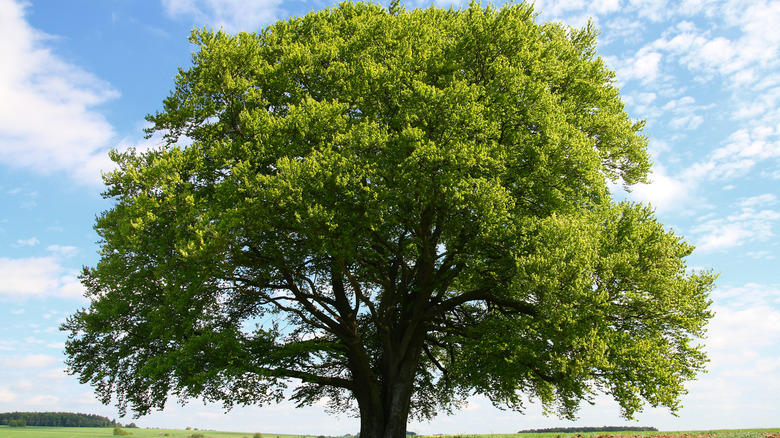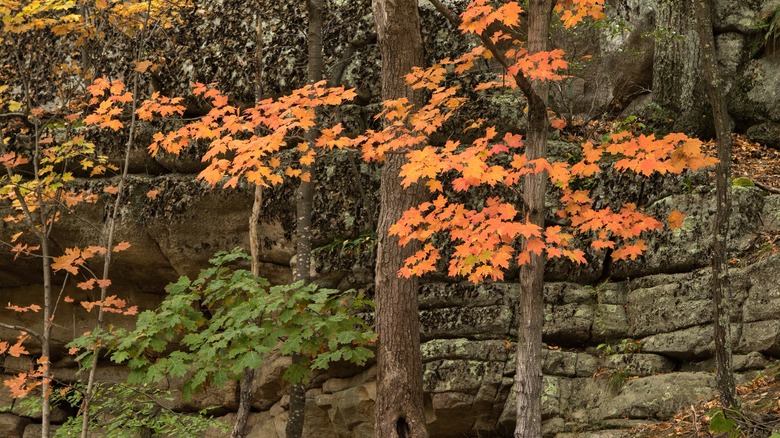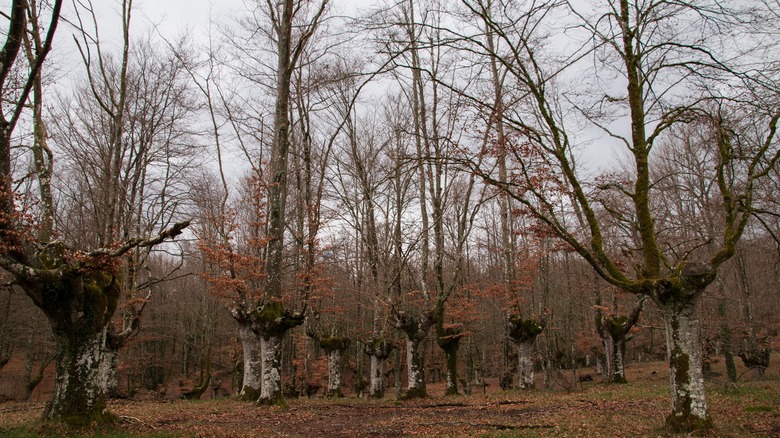The Best Method For Pruning Your Beech Trees, And How To Do It
Beech trees (Fagus grandiflora) demand attention with their stately size and graceful shape. These tall trees can reach up to 75 feet but keep an elegant, rounded shape. They typically grow one main trunk and their branches go out horizontally. Though beech trees are gorgeous, they aren't recommended near streets since their branches can hang low and their shallow root systems require room to spread out. They work beautifully in large yards, however. If you want a beech tree to be the focal point in your yard, start pruning when it's young to ensure it keeps the shape you're going for.
Beech trees should be grown in areas that receive plenty of rain. They need as much sunlight as possible, though they can tolerate some shade. Mature trees won't require a lot of upkeep, but staying on top of pruning allows you to ensure your tree stays healthy for years to come. Wounded trees can develop diseases and die, so removing diseased branches as soon as possible is important.
Prune early and when it's cold
Propagating beech trees is difficult, so starting with a young tree is best to get it acclimated into your yard. The benefit of having a young tree is that you can train it from a young age to make it easier to maintain when it's older, much like a puppy. One thing to remember is that too much pruning can cause young trees to grow multiple trunks. Beech trees thrive when they have one main trunk, so allowing more than one can cause the tree to weaken until it eventually dies. Should it survive despite the multiple trunks, it may affect the crown shape and leave you with a not-as-aesthetically pleasing mature tree.
Winter is the best time of year to prune beech trees. It's a deciduous tree that will drop its leaves in the fall, though the lower branches will hang onto their leaves throughout winter. Prune the tree while the limbs are bare so you don't interrupt its growth and so you can see what you're doing.
Pruning beech trees and keeping them healthy
When pruning beech trees, leave at least 8 feet clear on the trunk so lower branches have room to spread out. If your tree is young, leave the lower branches to encourage the tree to keep one main trunk. It will also shade the trunk to keep it from burning up. However, you can remove lower branches as desired once the tree matures. Use clean tree trimmers so you don't spread diseases between plants.
Remove diseased and dying branches all around the tree to keep it healthy. You can remove healthy branches as desired to keep their shape, as well as any branches that cross or touch each other. Doing so will prevent diseases from spreading. As you prune, take a few steps back to see the tree's overall shape. Prune any branches that stick out too far or otherwise affect the shape of the tree. Try to make as few cuts that exceed 2.5 inches in diameter as possible since beech trees struggle to recover from large wounds.


